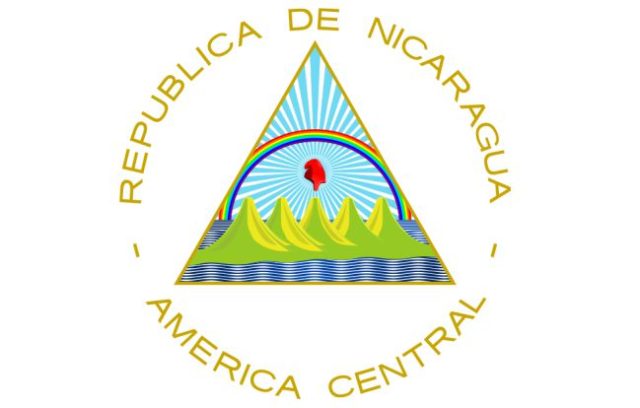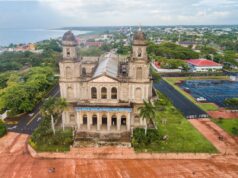September is Heritage Month (Mes de la Herencia) with many celebrations involving proud Nicaraguans and its a good time to learn something about the National Symbols of Nicaragua.
This year, Nicaragua joins Costa Rica, El Salvador, Guatemala, Honduras (and Panama) to celebrate the Central America Bicentennial; 200 years of independence from colonization on September the 15th 1821.
National Symbols of Nicaragua
Flag of Nicaragua
The blue and white of the Central America flags comes from 1822 and was first used by the Salvadoran General Manuel José Arce.
He waved one for the first time as the Chief of the Militia that defended El Salvador against the annexation of the Provinces of Central America to Mexico.
As a tribute, the colors of blue and white were decreed the colors of the region by The Central American Federation.
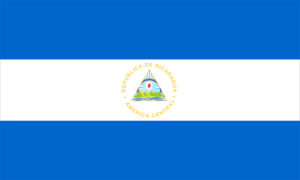
The modern Nicaraguan flag has three horizontal bands (white between blue) with the national emblem in the center (on the white band).
The white stripe represents the land or territory, (white symbolizing purity) and the two blue stripes indicate that the land is between two oceans, The Atlantic and The Pacific.
National Emblem (main photo above)
In the center of the flag on the white stripe is a triangle with the words REPUBLIC OF NICARAGUA CENTRAL AMERICA in a circle around it.
The equilateral triangle is a symbol of equality.
The rainbow means peace.
The Phrygian cap “El Gorro Frigio”, below the rainbow, is a classic symbol of freedom.
The five volcanoes express the union and the brotherhood of the five founding countries of Central America.
National Anthem
“Salve a ti, Nicaragua” (Hail to You, Nicaragua)
Words by: Salomón Ibarra Mayorga
Music by: Traditional (arranged by Luis Abraham Delgadillo) Adopted: 1918 (music), 1939 (lyrics)
The melody of the National Anthem is from a 300 year old liturgical anthem popular in Spain. It has been changed three times since it was used as the first official anthem between 1835 and 1837. In 1918 the original anthem was bought back and Luis Abraham Delgadillo (a Nicaraguan composer) was chosen to arrange the anthem.
A government contest was held to decide on the new words for the anthem. The only requirements for the lyrics were that they would be contained in two verses and they would be about peace and work. The government awarded the prize to Salomon Ibarra Mayorga, a Nicaraguan teacher and poet.
Salve a ti, Nicaragua (Original Spanish)
Salve a ti, Nicaragua! En tu suelo
Ya no ruge la voz del cañón,
ni se tiñe con sangre de hermanos
tu glorioso pendón bicolor.
Brille hermosa la paz en tu cielo,
nada empañe tu gloria inmortal,
¡Que el trabajo es tu digno laurel
y el honor es tu enseña triunfal!
Hail to thee (English translation)
Hail to thee, Nicaragua! On thy land
roars the voice of the cannon no more,
nor does the blood of brothers now stain
thy glorious bicolor banner.
Let peace shine beautiful in thy sky,
and nothing dim thine immortal glory,
for work is thy well earned laurel
and honor is thy triumphal emblem!
___________________
National Bird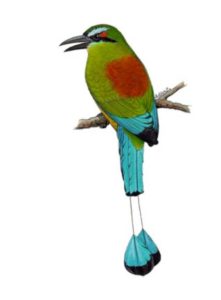
Nicaragua’s national bird, the Turquoise-Browed Motmot is more commonly known as the Guardabarranco. The fragile looking long tail of this very colorful bird is topped with two blue feathers.
National Tree
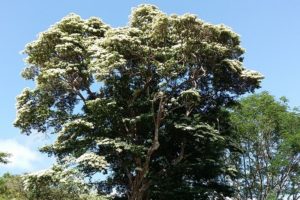
The Calycophyllum Candidissimum or Madroño (also known as the Strawberry Tree). It is the first tree to flower in Nicaragua (mid-November). Its white flowers are a traditional decoration on church altars.
National Flower
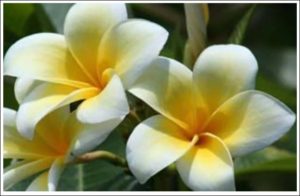
The Plumeria Rubia (Latin) or in Náhuatl: Xacuanxochitl – XACUAN is more readily identified by its common name; Sacuanjoche. It is used to make strings of flowers to adorn altars and burial crypts, especially for the traditional Day of the Dead.

